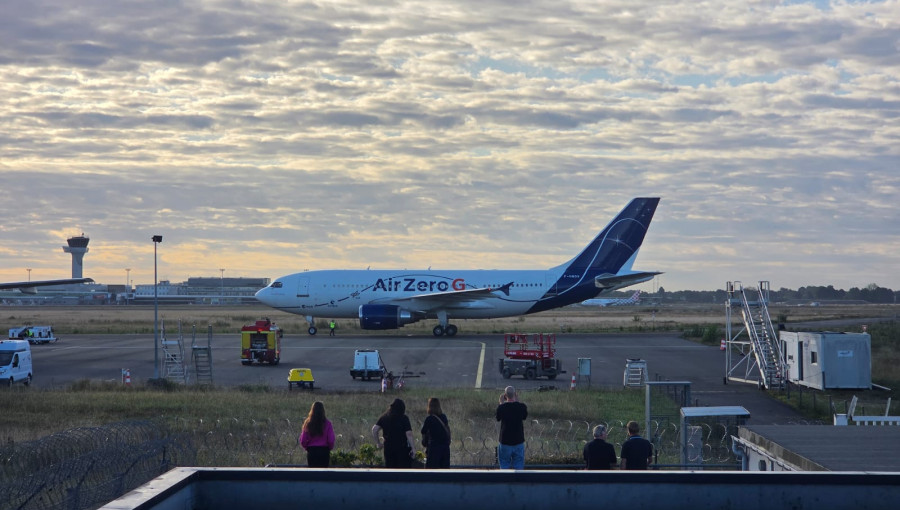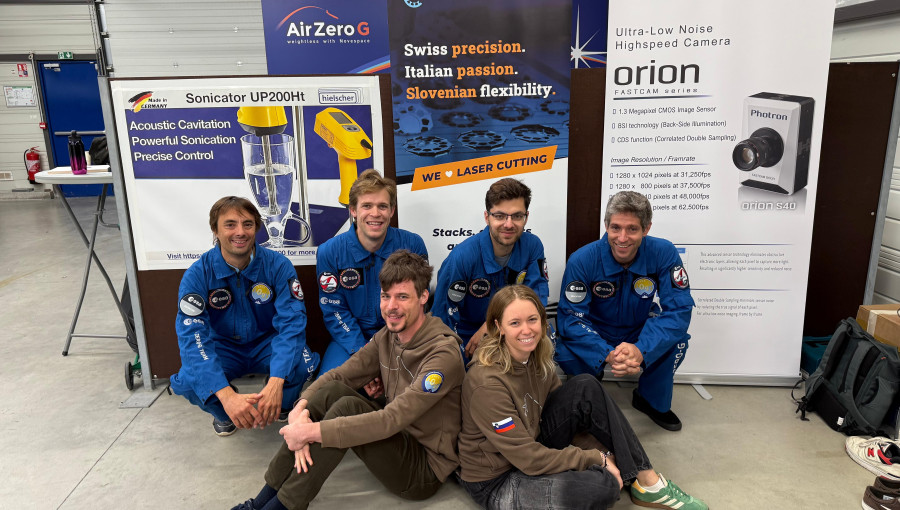Slovenian Students Explore “Space Mayonnaise” in Microgravity

Archive UL FS
Date of publication:
The CAVE 0g team from the University of Ljubljana studied the formation of emulsions in microgravity during the 87th parabolic flight campaign of the European Space Agency – a key step toward preparing food and medicine in space.
How do you mix oil and water in space? This question was taken up by the student research team CAVE 0g from the University of Ljubljana, which, after more than a year of preparation, participated in the 87th ESA Parabolic Flight Campaign in Bordeaux, under the ESA Academy Experiments Programme. Aboard the A310 ZERO-G aircraft, they carried out cavitation emulsification experiments in microgravity – in simpler terms, they were creating what they jokingly called “space mayonnaise.”
The goal of the project was to investigate how cavitation – the formation and collapse of bubbles in a liquid – affects the mixing of two immiscible liquids. On Earth, this process is influenced by gravity and turbulent flows, but in microgravity, new and still unexplained mechanisms emerge. Understanding these processes is crucial for developing advanced technologies for food preparation, pharmaceuticals, and materials processing in space conditions.
The CAVE 0g team consists of students from the Faculty of Mechanical Engineering, the Faculty of Electrical Engineering, and the Faculty of Natural Sciences and Engineering of the University of Ljubljana. The project was carried out under the supervision of Prof. Dr. Matevž Dular from the Laboratory for Water and Turbomachinery at the Faculty of Mechanical Engineering, UL.
Their experiment was one of only five European student projects selected and supported by the European Space Agency, demonstrating the exceptional level of Slovenian knowledge and innovation.
Initial results have shown that the absence of gravity significantly affects the shape and distribution of bubbles, which will be important for designing future systems for liquid mixing in microgravity environments. Following the successful completion of the experiment, the team is now analyzing the collected data and preparing a scientific publication.
The CAVE 0g project is supported by the European Space Agency, the Faculty of Mechanical Engineering of the University of Ljubljana, and several Slovenian industrial partners. With this achievement, the team continues the tradition of successful collaborations between Slovenian students and ESA, strengthening the visibility of Slovenian research excellence in space engineering.


